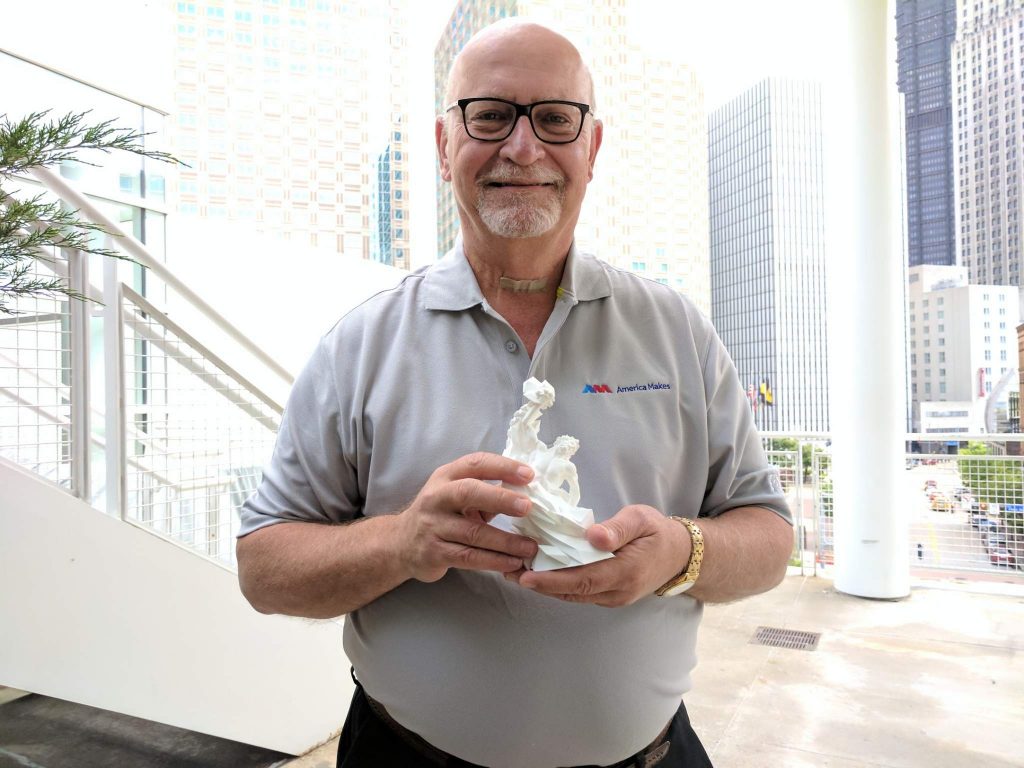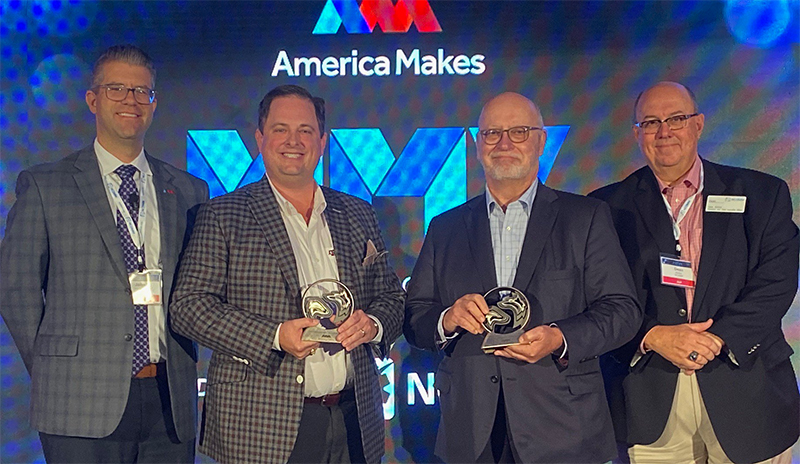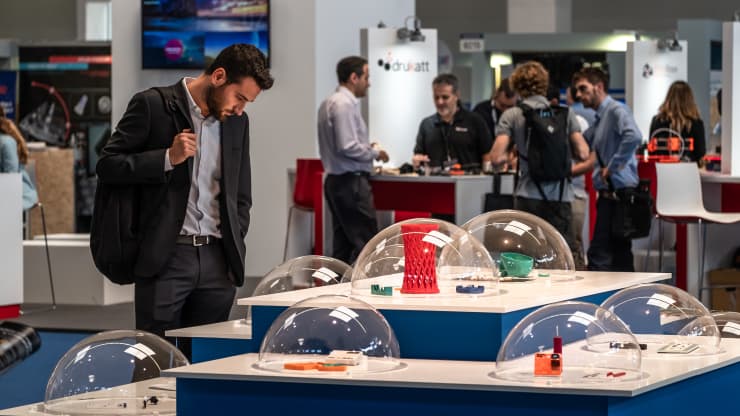3D Printing Industry Recognizes AMERICA MAKES
The year 2012 saw Ralph Resnick establish America Makes in Youngstown, Ohio. The institute has since played a major role in the advancement of additive manufacturing technology, serving as the US’ national accelerator for 3D printing.
Managed and operated by the National Center for Defense Manufacturing and Machining (NCDMM), the non-profit organization offers public-private partnerships with members from industry, academia, government, and non-government agencies, all in a bid to accelerate 3D printing innovation and improve the US’ manufacturing competitiveness on the global stage.
After much deliberation, we’ve selected Resnick to receive our Outstanding Contribution to 3D Printing accolade at the 2021 3D Printing Industry Awards on October 21st. He joins 2019’s winner Dr. Hans Langer, founder of 3D printer OEM EOS, and prior winners Dr. Adrian Bowyer, founder of the RepRap movement, and Fried Vancraen, founder and CEO of 3D printing software developer Materialise.
Ahead of the awards ceremony, we asked Resnick about his time in the additive manufacturing sector and what still lies before 3D printing in the coming years.

A spark to ignite three decades in AM
Resnick’s introduction to 3D printing can be traced back to the early 1990s, when he was serving as CTO of Extrude Hone, a Pennsylvania-based provider of manufacturing technologies. He visited Professor Ely Sachs in the 3D printing labs of MIT, where he saw a miniature Hagia Sophia model 3D printed in alumina. Right then and there, Resnick knew he’d witnessed what he described as ‘true innovation and groundbreaking technology development’.
He explained, “I knew I had to get myself and my company engaged as soon and as deeply as possible in this exciting work. There launched my near 30-year involvement in additive manufacturing.”
Resnick would later go on to serve as CTO of ExOne and in 2008, VP and CTO of the NCDMM. In 2011, he assumed the role of President and CEO and led the NCDMM to win the National Additive Manufacturing Innovation Institute contract, shortly before founding America Makes. His time at the NCDMM ended in 2019 when he retired from the institute altogether, winning the America Makes Distinguished Collaborator Award in the process.
Looking back over his career in additive manufacturing, Resnick recalls a time when all process and materials developments would occur in specialized labs and startup environments. A select number of companies and key individuals would closely guard their innovations, locking the evolving industry off from global tech specialists, especially in the fields of machine design, materials, controls, and software.
He states, “This parochialism delayed the mass involvement of key process researchers, manufacturing system experts, and critical established machine tool builders.”
It wasn’t until the early patents began expiring that the 3D printing landscape became more accessible, attracting global interest and technological breakthroughs that occurred at an accelerated rate.

The road ahead for 3D printing
When asked about what’s lacking in the additive manufacturing sector, Resnick maintained that the ecosystem still needed nurturing and large-scale investment. Traditional manufacturing had a hard time securing investments due to a lack of patient capital. 3D printing, on the other hand, has a certain impact-rich potential which seems to be generating sufficient interest from the technology and new business investment community, as is evident from the huge spate of acquisitions and SPAC mergers we’ve witnessed recently.
Furthermore, due to the need for new and diverse workforce skills, additive manufacturing is increasingly calling for knowledgeable and properly trained professionals. While there are targetted training programs like those provided by EOS’ Additive Minds Academy and the SAM (Sector Skills Strategy in Additive Manufacturing) consortium, we still need both government and industry initiatives to effectively train and retrain the upcoming 3D printing workforce.
For those looking to kick start a career in additive, Resnick recommends first surveying the diverse landscape to determine whether you’d like to go into the technology or business side of things, and whether you’d like to specialize or generalize. This is necessary due to the sheer complexity and rapidly changing nature of the ecosystem.
He adds, “Additive is a quickly evolving field, not only in its own technology areas but also in the vast impacts it’s having and will have in advanced part designs and manufacturing business models while revolutionizing fragile supply chains.”
Step two then involves seeking out formal or hands-on training in the appropriate areas. Since conventional training programs may not be sufficiently up to date, it may be necessary to supplement the learning journey with additional independent courses, extra labs, internships, and plenty of journal, research, and report reading.
Resnick’s legacy at America Makes and the NCDMM is a longstanding one, now marked by 3D Printing Industry’s Outstanding Contribution to 3D Printing award. He concludes that additive manufacturing is more than just a new production process, but a revolutionary body of expertise that’s set to change the way that we make things and transact business.
Subscribe to the 3D Printing Industry newsletter for the latest news in additive manufacturing. You can also stay connected by following us on Twitter, liking us on Facebook, and tuning into the 3D Printing Industry YouTube Channel.
Looking for a career in additive manufacturing? Visit 3D Printing Jobs for a selection of roles in the industry.

